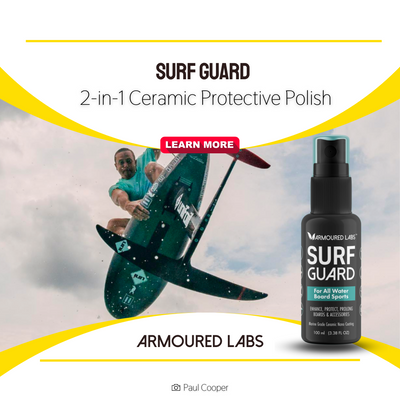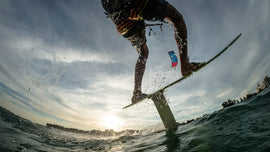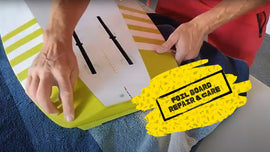Whether you're a seasoned paddler or just starting out, choosing the right paddleboard (SUP – Stand Up Paddleboard) can be a daunting task. With so many different shapes, sizes, and materials available, it's easy to feel overwhelmed. But fear not! In this ultimate guide, we'll walk you through everything you need to know to choose the perfect paddleboard for you. From understanding the different types of boards to considering your personal preferences and skill level, we've got you covered. So, grab a cup of coffee and get ready to dive in to our top 5 tips on how to choose the right paddleboard.
- Knowing the parts of a paddleboard
- Understanding your riding style
- Your riding experience and weight
- Construction materials
- Choosing the right paddleboard
Paddleboarding has exploded in popularity in recent years, and for good reason. It's a fun, low-impact way to get out on the water and enjoy nature. But with so many options out there, choosing the right paddleboard can be overwhelming. To help you make the best choice, consider your skill level, body type, and intended use. Are you a beginner or an experienced paddler? Do you plan to use your board for touring, surfing, or yoga? By answering these questions, you can narrow down your options and find the perfect paddleboard for you. So get ready to choose the right board for you and hit the water – adventure awaits!
My family and I have a passion for paddleboarding. We love exploring the archipelago by our summer house on our boards, or going to lakes on the weekends. I have a family with one young child and a teenager so when we first got into paddleboarding, I struggled to choose the right boards due to everyone’s different weights, heights, and because of our location. After some research, I learned that the most important factors to consider are the board's size, shape, and construction material. I opted for all-round boards that are versatile and stable, perfect for beginners like us. Our paddleboarding journey has been full of unforgettable experiences and memories, and we're excited to continue exploring and growing in this sport.
Let's go!
TABLE OF CONTENTS
- Knowing the parts of a paddleboard
- Understanding your riding style
- Your riding experience and weight
- Construction Materials
- Choosing the right paddleboard
- FAQs
HOW TO CHOOSE THE RIGHT PADDLEBOARD
Step #1: Knowing the parts of a paddleboard
Whether you're a seasoned pro or a first-time paddleboarder, knowing the parts of a paddleboard and the essential accessories is key to an enjoyable experience on the water. The board itself is composed of several parts, including the nose, tail, deck, and rails. The type of board you choose will depend on your skill level and intended use. Additionally, there are a variety of accessories, such as paddles, leashes, and fins, that can enhance your performance and safety on the water. By understanding the anatomy of a paddleboard and the must-have accessories, you'll be well-equipped for a successful and enjoyable day on the water.

Step #2: Understanding your riding style
Understanding your riding style is crucial in selecting the right paddleboard type that will suit your needs. There are different paddleboard types to choose from, including all-around, touring, racing, and surfing paddleboards. Each type has unique features designed to cater to specific riding styles. For example, if you enjoy exploring calm waters, a touring paddleboard is a perfect fit. On the other hand, if you prefer riding waves, a surfing paddleboard is the best choice. Knowing your riding style will help you make an informed decision and enhance your paddleboarding experience.
All-round paddleboard

Touring paddleboard

Racing paddleboard
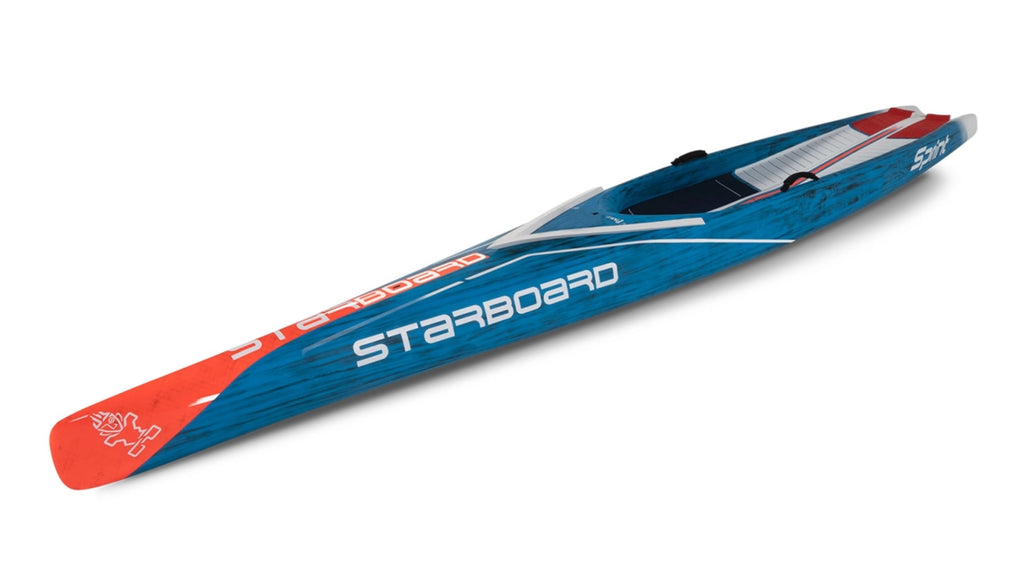
Inflatable paddleboard

Yoga paddleboard
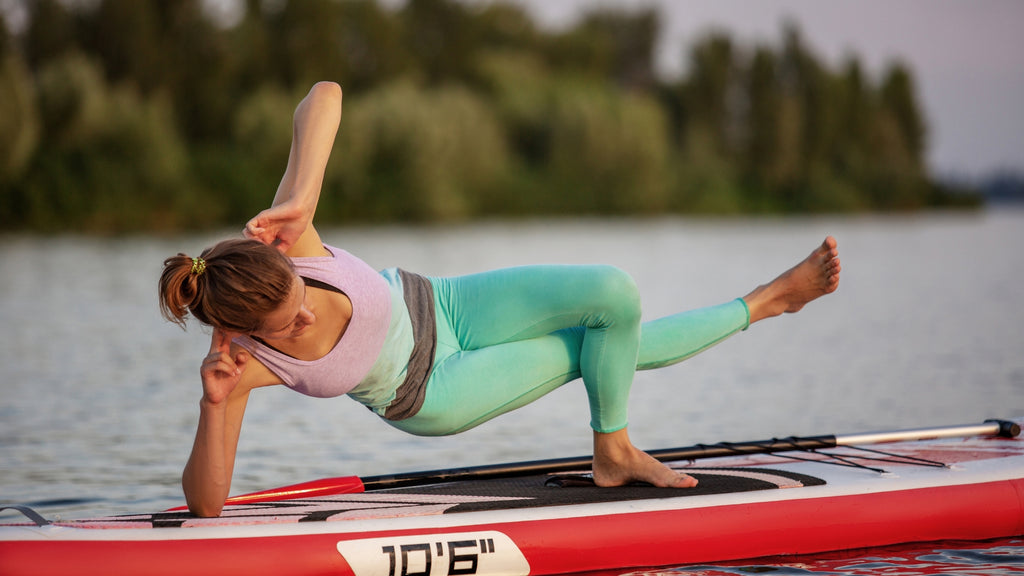
Step #3: Your riding experience, height and weight
When choosing the right paddleboard, your riding experience, height, and weight play a crucial role. If you're a beginner, it's recommended to start with a wider board for better stability. As you gain experience, you can switch to a narrower board for faster speeds. Your height also matters as it affects your center of gravity, which can impact your balance on the board. Taller individuals may benefit from longer boards, while shorter individuals may find shorter boards more manageable. Weight is also a factor, as heavier individuals may require a wider board for better stability. Overall, it's important to consider your riding experience, height, and weight when selecting the right paddleboard for you.
Step #4: Construction materials
When it comes to paddleboarding, there are two main types of boards: hard paddleboards and inflatable paddleboards. Both types of boards are made using different materials and construction methods to achieve different results.
Hard paddleboards are typically made with a foam core that is then wrapped in layers of fiberglass or carbon fiber. This gives the board its rigidity and strength, allowing it to glide smoothly through the water. The outer layers of the board are also coated in resin, which provides protection from scratches and damage.
In contrast, inflatable paddleboards are made from PVC or other similar materials. These boards are constructed by layering the material and sealing it using heat or glue. The result is a lightweight and portable board that can be easily inflated and deflated for storage and transport. The construction methods used for these paddleboards vary depending on the manufacturer, but most use a combination of high-quality PVC and drop-stitch technology. The PVC material is durable and can withstand the wear and tear of regular use, while the drop-stitch technology provides a sturdy, rigid structure. Additionally, some manufacturers incorporate additional layers of reinforcement around the edges and underside of the board for added durability.
The choice between a hard paddleboard and an inflatable paddleboard often comes down to personal preference and specific use cases. Hard paddleboards are ideal for experienced paddlers who want maximum performance and speed, while inflatable paddleboards are perfect for beginners or those with limited storage space. Regardless of which type of board you choose, both are designed to provide a fun and rewarding experience on the water.
Step #5: Choosing the right paddleboard
Inflatable paddleboards are lightweight, easy to store, and ideal for beginners or those who travel frequently. Hardboards provide a more authentic surfing experience and are best suited for advanced riders or those who prioritize speed and maneuverability. Consider the type of water you'll be paddling in, your budget, and the type of activities you plan to do before making your choice. Ultimately, the right paddleboard for you is one that fits your needs and allows you to enjoy the sport to the fullest.
FAQs: How to choose the right paddleboard
Q. What are the weight limitations for paddleboards?
A. It's important to take into account weight limitations. Most standard paddleboards have a weight limit of 200-250 pounds, while larger boards can support up to 350 pounds. It's crucial to consider your body weight as well as any gear or accessories you plan to bring on board. Additionally, inflatable boards tend to have lower weight limits compared to solid boards. Always check the manufacturer's specifications to ensure you choose a paddleboard that can safely support you and your equipment.
Q. What is the difference between a touring board and a recreational board?
A. Touring boards are typically longer and slimmer, designed for faster speeds and longer distances. Recreational boards, on the other hand, are wider and more stable, making them perfect for beginners and leisurely paddling. Think about how you plan to use your paddleboard and your skill level when making your choice. Touring boards are great for fitness and exploring open water, while recreational boards are ideal for calm lakes and easy paddling.
Q. What accessories should I consider purchasing with my paddleboard?
A. A good-quality paddle is a must-have, as it can greatly impact your performance and reduce the risk of injury. A leash is also essential to keep you and your board together in case of a fall. A life jacket or personal flotation device is highly recommended for safety reasons. Other useful accessories include a waterproof bag to keep your belongings dry, ceramic protection to keep your board in pristine condition, a deck pad for added comfort, and a fin to improve stability and maneuverability. Ultimately, the accessories you choose will depend on your individual needs and preferences, but investing in quality equipment can make all the difference in your paddleboarding experience.
Q. What safety gear should I have when using a paddleboard?
A. When choosing the right paddleboard, safety should be a top priority. It is recommended to wear a personal flotation device (PFD) at all times while on the water. Additionally, a leash is essential to keep you connected to your board in case of a fall or unexpected current. Sun protection such as sunscreen, sunglasses, and a hat are also important. Consider wearing water shoes to protect your feet from sharp objects in the water. Finally, a whistle is a small but crucial safety item to alert others in case of an emergency. Always prioritize safety when enjoying the water on your paddleboard.
Final Thoughts
In conclusion, choosing the right paddleboard (SUP – Stand Up Paddleboard) can make or break your experience on the water. By considering factors such as your skill level, intended use, and budget, you can narrow down your options and find the perfect board for you. Don't forget to also consider the type of paddle and any additional accessories you may need. With these tips in mind, you'll be well on your way to making an informed decision and enjoying all that paddleboarding has to offer.
When you choose the right paddleboard for you, consider a high-quality ceramic coating for your board to keep it protected from the elements. With a ceramic coating from Armoured Labs Surf Guard, you’ll experience unmatched hydrodynamics, effortlessly glide through the water with reduced drag, increased speed, and retain your boards color lustre. Keep water spots and salty residue off your boards and protect it from harmful UV rays. Level up your paddleboarding experience with the ultimate protection from Armoured Labs.

Find similar articles
Surf Guard